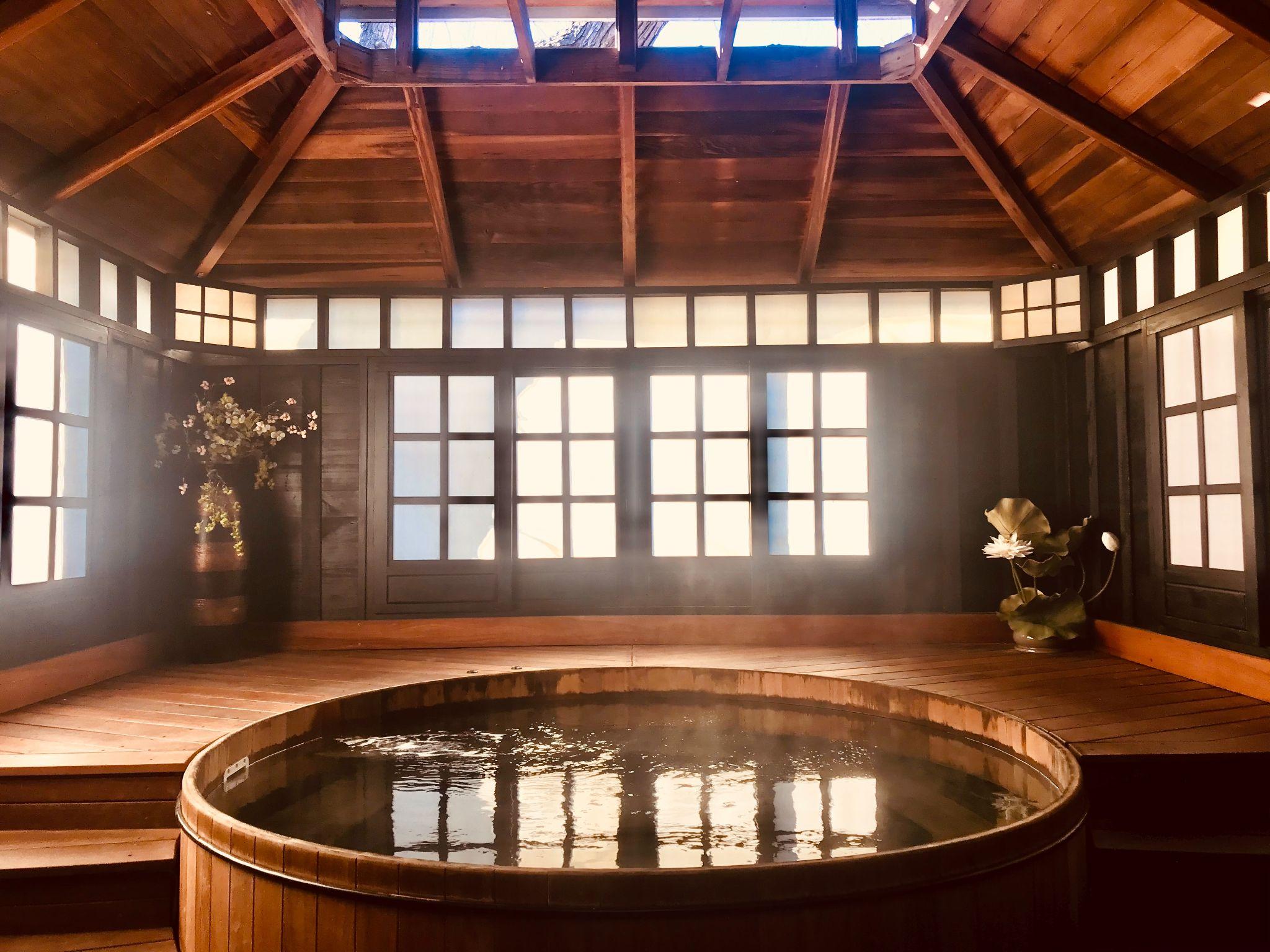If you frequently suffer from sore muscles, you know the vital role heat plays in relieving that pain. Using heat on affected muscles improves blood flow by increasing the internal temperature. This results in better muscle recovery.
There are many reasons why you may have frequent complaints of sore muscles. For example, those who hit the gym regularly are bound to have sore muscles from their workout routines.
It is not necessary to work out to experience soreness. Stress can trigger muscle tension and lead to sore muscles all by itself. Whatever the reason for the sore muscles, have you ever thought of the best way to relieve the discomfort?
Since heat works miracles on soreness, saunas and hot tubs seem to be really good ways of unwinding. However, which of the two works best for muscle recovery?
Sauna vs Hot Tub
If you have used both a sauna and a hot tub, then you know they each offer a unique experience despite having similar functions.
When it comes to relieving the ache of sore muscles, kickstarting the healing process is the best way to go. This is usually done with the help of heat. Both saunas and hot tubs offer heat and a relaxing experience. But which one does it better?
There is no doubt that heat therapy in either will result in stress relief, muscle relaxation, and other benefits. However, when it comes down to quicker muscle recovery, hot tubs take the cake.
Hot tubs are superior to saunas when it comes to relieving sore muscles. They are highly effective in reducing inflammation and lactic acid and increasing blood flow to the muscles.
While saunas offer similar benefits, their effectiveness is much lesser compared to hot tubs. Therefore, despite having similar effects on muscle recovery, hot tubs are the better choice over saunas.
Why Is a Hot Tub Better for Sore Muscles?
Why does dipping into a hot tub after an intense workout or a long stressful day feel good?
A 2014 study indicates that submerging oneself in hot water can increase a growth hormone called somatotropin. This hormone found in your blood helps enhance cellular regeneration.
According to this study, the use of hot water also helps reduce the body’s stress hormone, also known as cortisol. The lower your stress is, the more relaxed you will be. If you are relaxed, you will not clench your muscles as much.
Athletes’ main cause of sore muscles is the production of lactic acid. Hot tubs help reduce these levels. In fact, if athletes do some pre-activity soaking in a hot tub, they can entirely avoid sore muscles.
In addition to the therapeutic benefits of hot water, jets in hot tubs are also instrumental in helping target and relax knotted muscles. The water pressure from these jet streams gives a therapeutic massage to strained muscles. This is known as hydrotherapy.
Hydrotherapy is used to help those with migraines, fibromyalgia, arthritis, and back pain. One of the many benefits of hydrotherapy is the ability of water to lift pressure off of your joints and muscles due to the buoyancy of water. This allows you to truly relax.
Hot Tub and Inflammation
We typically link inflammation with muscle soreness. When our muscles are inflamed, they cause muscle weakness. However, in reality, no research has been able to link sore muscles and muscle inflammation.
So, while hot tubs are great for reducing inflammation, we should not assume sore muscles are inflamed. The main cause behind sore muscles is usually overexertion.
A study has proven that hot water immersion works wonders for sedentary, overweight adults who complained of muscle inflammation.
How Long and How Often Can You Use a Hot Tub for Soreness?
Before you try anything, it is always a good idea to talk to your doctor, especially if you have pre-existing health conditions. For those who work out, it is beneficial to hop into a hot tub before and after your session to help with muscle recovery.
Before you get started with any workout routine, slip into a hot tub for up to 20 minutes. This will help improve blood flow and loosen up muscles.
Once you are done with your exercise routine, wait for some time before you get into a hot tub. Give yourself sufficient time to cool down and get your heart rate back to normal before immersing yourself in the hot water.
You can spend up to 30 minutes in a 100°F hot tub or up to 15 minutes in a 104°F hot tub. You can do this on a regular basis, provided you do not exceed the recommended time.
Other Benefits of a Hot Tub
Hot tubs and saunas have similar beneficial effects. While hot tubs trump saunas in the sore muscle department, what are the other potential benefits they can provide?
The warm water of hot tubs has the ability to reduce swelling, increase blood flow, and loosen tight muscles by increasing the elasticity of collagen fibres. The buoyancy of the water allows weight to be taken off painful joints, allowing you some pain relief.
When our body goes through rigorous motions, as with exercise, tiny microtears develop in our muscles. As a result, the nerves send out pain messages to the area. The warm water of a hot tub works to soothe this pain by enhancing blood flow to the stressed area.
Sauna and Sore Muscles
Saunas are also beneficial to athletes in terms of relieving sore muscles. They, too, increase blood flow and enhance endorphin release in the body. Sauna heat helps in the production of heat shock proteins. These proteins are responsible for positive biological effects.
However, saunas raise your heart rate. This is not what you want post-exercise. You want your heart rate to come down to normal levels for your recovery process to start. Additionally, muscle recovery requires fluids. Saunas reduce bodily fluids, which makes them not as efficient in relieving sore muscles.
How Much Time Should You Spend in a Sauna for Relieving Sore Muscles?
You have to spend an appropriate amount of time in a sauna if you want to enjoy its benefits. Those who spend at least 20 minutes per session in a sauna up to two times a week after a workout showed elevated levels of the growth hormone, hGH.
This hormone increases by at least 150% after the sauna session. It is known to help with muscle recovery. It also helps the body recover after surgery.
Can You Use a Sauna After a Workout?
Since saunas boost endorphins, they help you relax and allow you to feel good overall.
Just as hot tub use after a workout works wonders in reducing pain, saunas are also effective in lowering pain associated with delayed onset muscle soreness. It does so by increasing blood flow and releasing required hormones.
While there are many benefits to sauna use, they must be used with proper precautions in place. It is possible to overdo something and cause more harm than good.
Other Benefits of a Sauna
Regular use of saunas can provide many potential benefits, such as improving cardiovascular capability. They improve bodily functions, reduce blood pressure, improve sleep patterns, and provide stress relief. You may also experience skin and hair benefits.
Combining workout routines with sauna use will help you in your goal of becoming a healthy individual if done right.
The Takeaway
Sore muscles are a nuisance. However, we cannot completely avoid them after strenuous exercises. They plague us in our daily lives. Heat therapy is known to be a very effective method of taking away pain related to sore muscles.
Though hot tubs and saunas both use heat to provide relief, hot tubs are superior in healing sore muscles. The combined use of pressure jets and warm water is instrumental in increasing muscle recovery and relieving pain.




